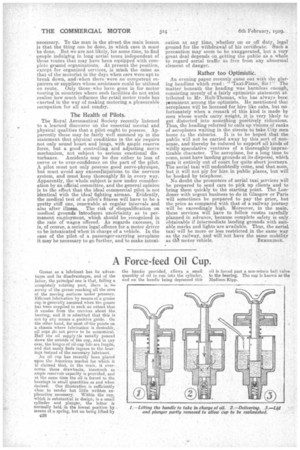A Force-feed Oil Cup.
Page 18

If you've noticed an error in this article please click here to report it so we can fix it.
Grease as a lubricant has its advantages and its disadvantages, and of the latter, the principal one is that, failing a 'completely rotating part, there is no surety of the grease reaching all the area of the moving surfaces under pressure. Efficient lubrication by means of a grease cup is generally assumed when the grease has been supplied to such an extent that it exudes from the crevices about the bearing, and it is admitted that this is not by any means a positive guide. On the other hand, for most ofrthe points on a chassis where lubrication is desirable, oil cups xio net prove to be economical. Half the oil supply,3is usually poured down the outside of the cup, and in any case, the hinges of oil-cup lid.; are fragile, and dirt easily finds ingress to the bearings instead of the necessary lubricant. An oil cup has recently been placed upon the American market for which it is claimed that; in the main, it overcomes these drawbacks, inasmuch as ample reservoir capacity is provided, and at the same time the oil • is forced to the bearings in small quantities as and when
desired_ Our illustration is sufficiently clear to render but little written ex planation necessary. Within the cup, which is substantial in design, is a small cylinder and plunger, the latter is normally held in the lowest position by means of a spring, but on being lifted by C3B the handle provided, allews a small quantity of oil to run into the cylinder, and on the handle being depressed this oil is forced past a non-return ball valve to the bearing. The cup is known as the Madison-Kipp.






















